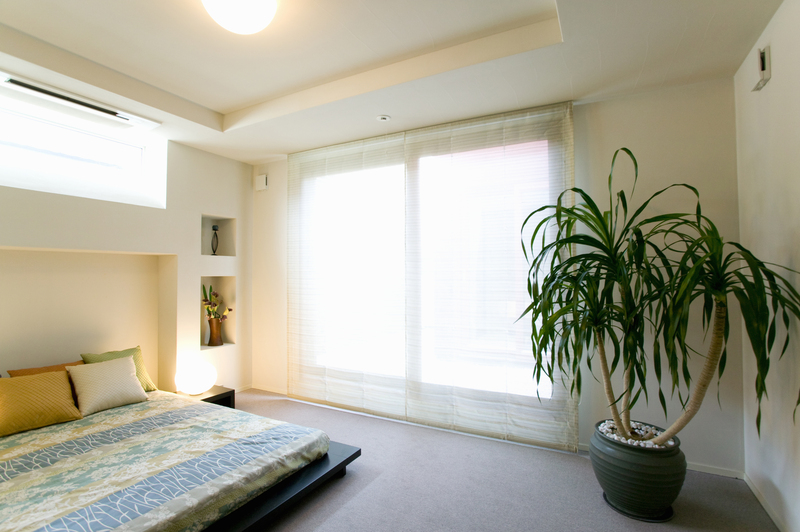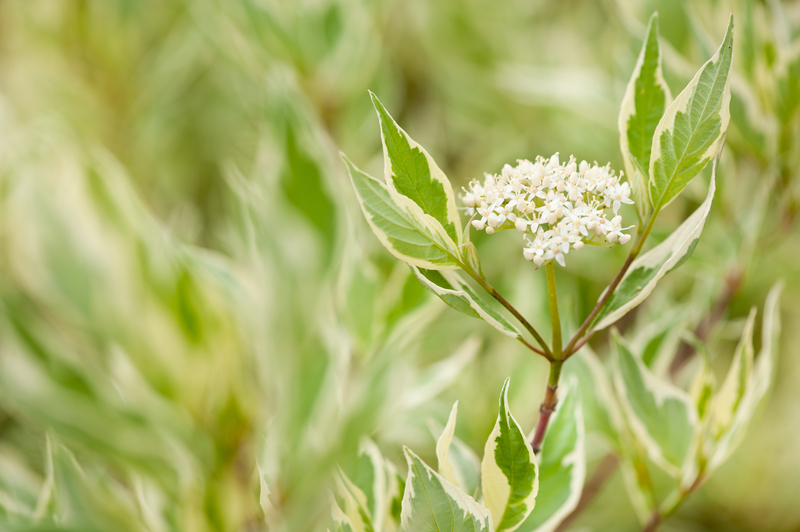Evergreen Climbers for Shade: Enlivening Dark Corners
Posted on 17/05/2025
Evergreen Climbers for Shade: Enlivening Dark Corners
Do you have shady spots in your garden that feel forgotten, drab, or simply too uninspiring to spend time in? Often, the answer to these dark corners is the strategic use of evergreen climbers for shade. With their lush foliage year-round and the ability to thrive in low-light conditions, these climbing plants can effectively enliven even the gloomiest garden spaces. In this comprehensive guide, we'll show you the best shade-loving evergreen climbers, tips for planting and maintenance, and inspiring ideas for transforming your shadowed outdoor nooks.
Why Choose Evergreen Climbers for Shade?
Dark garden corners present a unique challenge. Grass and many flowers struggle, often leaving spaces bare or susceptible to moss and weeds. However, evergreen climbers are natural problem-solvers, offering several advantages:
- Year-round Interest: Their persistent leaves maintain color and coverage even in winter.
- Vertical Greening: They add height and structure without hogging ground space--a blessing in compact or awkward plots.
- Wildlife Benefits: Many shade tolerant evergreen climbers supply shelter, food, and nesting for birds and beneficial insects.
- Low Maintenance: Once established, these climbers generally need minimal attention.
- Privacy & Screening: Evergreen species provide consistent privacy, effectively hiding fences, sheds, or utility areas, regardless of the season.

Top Evergreen Climbers for Shade
Not all climbers flourish in low light, but the following stars can transform dull spots into green oases:
1. Ivy (Hedera helix)
Perhaps the most classic evergreen climbing plant for shade, English Ivy is celebrated for its glossy leaves and robust growth--even in the deepest shade. It clings to walls, tree trunks, or trellises, filling gaps where little else will grow.
- Hardiness: Extremely tough and resilient.
- Foliage: Ranges from classic dark green to variegated white/yellow forms for added visual interest.
- Care: Requires occasional trimming to curb rampant growth, as it can be quite vigorous.
2. Star Jasmine (Trachelospermum jasminoides)
While star jasmine is widely prized for sun, it also performs admirably in dappled or partial shade. Its twining vines carry evergreen leaves that sometimes blush red in cold weather, and from early summer, it fills the shade with clusters of sweetly scented, star-shaped white flowers.
- Hardiness: Hardy in milder climates; may need protection in colder areas.
- Flowering: Fragrant summer blooms add extra charm.
- Uses: Perfect for training up trellises and pergolas in shaded courtyards.
3. Climbing Hydrangea (Hydrangea anomala subsp. petiolaris)
Though technically semi-evergreen, climbing hydrangeas retain much of their foliage in mild climates, especially in shaded, sheltered spots. Large, oval leaves create a fresh, green backdrop, and showy lacecap blooms brighten the space in summer.
- Shade Tolerance: Thrives in full or partial shade.
- Foliage: Large, textured, and dense--perfect for bold coverage.
- Support: Self-clinging aerial roots allow it to attach to walls without wires.
4. Pyracantha (Firethorn)
While often grown as a shrub, pyracantha's pliable, thorny stems are easily trained as a wall climber. It boasts glossy evergreen leaves, clusters of white spring flowers, and spectacular orange, yellow, or red berries each autumn and winter.
- Wildlife Value: Provides shelter and berries for birds.
- Security: Its thorns make it an effective barrier near boundaries.
- Position: Tolerates shade, though berry production peaks with a bit of light.
5. Chinese Star Jasmine (Trachelospermum asiaticum)
Similar to its better-known cousin but even more adaptable to shade, Trachelospermum asiaticum offers smaller leaves, creamy-white flowers, and a neat, compact habit that is ideal for containers or tight spots.
- Growth: Slower than classic star jasmine, which makes it easier to manage.
- Foliage: Lush green with coppery new growth in spring.
6. Wintercreeper (Euonymus fortunei)
Not all evergreen climbing plants for shade are true vines. Wintercreeper can climb or sprawl as groundcover, thriving in shade beneath shrubs or trees. Varieties like 'Emerald Gaiety' or 'Silver Queen' offer bright, variegated foliage to lighten dark spaces.
- Versatility: Climbs when it finds support, or remains a mat-forming groundcover.
- Toughness: Tolerates poor light, dry shade, and urban pollution.
7. Clematis armandii
One of the few clematis species that's evergreen, this Chinese native bears leathery, strap-shaped leaves and a profusion of almond-scented white flowers in early spring. It's a stunning option for shadier areas, especially when given support to climb.
- Foliage: Year-round glossy leaves.
- Flowers: Appear before many other garden plants are awake.
- Shade: Prefers partial shade over deep shade.
How to Choose the Best Shade-Loving Evergreen Climber for Your Space
Not all shady spots are equal. Evaluate your garden before choosing your climber:
- Degree of Shade: Does your area get dappled light, morning sun, or is it in deep, dry shadow?
- Soil Quality: Heavy, waterlogged soils may need improvement before planting.
- Space & Height: Are you covering a shed, an archway, or a tall wall? Pick a climber to match available vertical space.
- Climate: Not all evergreen climbers for shady corners are frost-hardy--check their hardiness ratings if you have cold winters.
- Maintenance: Some vigorous species need regular pruning; others are slower and easier to manage.
Design Ideas: Enlivening Dark Garden Corners with Evergreen Climbers
The beauty of shade-loving evergreen climbing plants lies in their transformative potential. Here are creative ways to use them in your garden:
1. Soften Walls and Fences
Old brick, unsightly concrete, or timber fences can be quickly softened with a living green cladding. Ivy, climbing hydrangea, and pyracantha are all superb choices for this purpose. Their relentless growth can mask imperfections and create a beautiful backdrop for shady seating areas.
2. Frame Entrances and Arbors
Arched gateways and pergolas positioned in partial shade look spectacular draped with jasmine or clematis armandii. The vibrant evergreen leaves form a lush "frame," welcoming visitors and providing shelter.
3. Cover Unsightly Sheds or Bins
Turn utility areas into attractive features by training wintercreeper or ivy up their sides. You'll screen ugly but necessary structures while boosting the leafiness of your garden, even in shaded spots.
4. Brighten Deep Shade with Variegated Foliage
In very dark corners, use variegated evergreen climbers like variegated ivy or Euonymus fortunei. Their splashes of cream, white, or gold reflect light and instantly lift the gloom.
5. Combine Evergreen Climbers with Other Shade-Lovers
For a multi-layered effect, plant evergreen shade climbers alongside ferns, hostas, hellebores, and other woodland understory plants. This creates a lush, tranquil green space reminiscent of a secret garden.
Planting and Caring for Evergreen Climbers in Shade
Site Preparation
- Clear the area of weeds and debris.
- Loosen soil deeply, especially if near walls with compacted earth.
- Incorporate compost or leaf mould to boost organic matter and drainage.
Planting
- Time: Early autumn or spring is ideal.
- Dig a hole twice as wide as the rootball.
- Spacing: Check mature width--some climbers get large!
- Water thoroughly after planting.
Support and Training
- Provide trellises, wires, or netting if there is no natural support (unless using ivy or climbing hydrangea, which self-cling).
- Gently tie new growth until it finds purchase on its own.
Maintenance
- Watering: Shade can mean dryer soil under trees or eaves. Water new climbers regularly until established.
- Mulching: Apply organic mulch each spring to conserve moisture and feed the roots.
- Pruning: Trim to shape or control growth - especially important for vigorous species like ivy.
- Check for signs of pests or diseases; shade can harbor more moisture, sometimes inviting slugs or fungal issues.

Frequently Asked Questions (FAQ) about Evergreen Climbers in Shade
Can I grow evergreen climbers in deep, dry shade?
Yes, ivy and euonymus are among the few reliable options for truly deep, dry shade. Improve soil with compost and ensure adequate watering while they establish.
Which evergreen climber produces the most flowers in shade?
Trachelospermum jasminoides (star jasmine) will still produce fragrant white blooms in partial shade, as will clematis armandii in light or dappled shade.
Are any evergreen climbers invasive or problematic?
Ivy can become aggressive if unchecked, especially in milder climates. Prune annually and avoid allowing it onto roofs or into brickwork. Pyracantha's thorns can also be a challenge in play areas.
How fast do evergreen climbers for shady corners grow?
Growth rates vary. Ivy and wintercreeper are fast, sometimes covering sizable areas in a couple of seasons. Star jasmine and clematis armandii are more moderate, gradually building up lush coverage over several years.
Conclusion: Transforming Shaded Corners into Verdant Retreats
In every garden, there are spaces where sunlight is fleeting or absent. Rather than resigning these areas to neglect, evergreen climbers for shade offer a dynamic, sustainable solution for year-round interest and beauty. With thoughtful selection, planting, and care, these steadfast plants will enliven your dark corners--providing privacy, wildlife value, and lush, calming greenery in every season. Don't let shade limit your garden's potential. Let it inspire you to create your own hidden oasis of life and color!
Key Takeaways
- Shade is no barrier to beauty--many evergreen climbing plants thrive in low-light areas.
- From ivy and pyracantha to climbing hydrangea and star jasmine, there's a shade-loving climber for every challenge.
- Ensure suitable support and soil preparation for best results.
- Use combinations of leafy climbers and variegated types for a layered, light-reflecting impact.
- Proper establishment pays off--these plants will reward you with structure and interest throughout the year.
Transform your shady corners--start planting with confidence, and unveil the hidden beauty in every shadow of your landscape!

